1984's A Nightmare on Elm Street is a Surreal Suburban Spookfest with Class, Intelligence and Imagination
That Wes Craven was onto something with that Freddy Krueger character! He really seems to have caught on!
One of the many things that I found surprising about Never Sleep Again, the epic four-and-a-half-hour documentary about the A Nightmare On Elm Street series that I watched for The Fractured Mirror, my upcoming book on American films about movie-making, is that Wes Craven had a tough time getting the film made. He began shopping it around in 1981 but it wasn’t released until three years later.
To me, Wes Craven is a god. No, he’s better than a God: he’s a frightmaster. I would imagine that studios would line up to get in bed and business with a true giant of horror but I’m seeing things through the prism of the entirety of Craven’s extremely successful career and my enormous respect for him.
To people with lots of money and very little imagination, Craven wasn’t one of the all-time great horror directors seeking an extremely modest sum of money to make a masterpiece that would capture the public’s imagination like few films before or since and introduce a monster for the ages.
When Craven brought the screenplay to studios, they didn’t see a masterful metaphorical exploration of the fundamental hypocrisy and evil lurking behind the white picket fences and manicured lawns of suburbia. Instead, they saw a low-budget teen slasher movie starring an unknown nineteen-year-old whose career was limited to extra work on Rumble Fish and The Outsiders and a lead role in Nickel Mountain, a movie that played one city in Oklahoma.
Craven directed movies that defined the 1970s, 1980s, and 1990s. He actually directed two movies that defined the 1970s: The Last House on the Left and The Hills Have Eyes. An argument could certainly be made that The People Under the Stairs, with its pointed political commentary, defined the 1990s almost as much as Scream did.
People Under the Stairs was inspired by Twin Peaks. Its villains, modeled after Ronald and Nancy Reagan, were even played by alum of the zeitgeist-capturing small screen sensation.
1984’s A Nightmare on Elm Street, meanwhile, is redolent of David Lynch’s Blue Velvet. It’s the perfect horror film for a Reagan decade of consumption and conformity in its iconic portrayal of a small town that looks idyllic, wholesome, and All-American from the outside but is rotten, depraved, and violent at its core.
Craven has always been among the brainiest and most cerebral of horror filmmakers. He’s interested in scaring us but also in exploring why we’re scared and what that says about us as a country and a species.
A Nightmare on Elm Street traffics in moral ambiguity. Freddy Krueger might have been a monster even before he was killed, but he also suffered the kind of agonizing torture and murder that makes his posthumous quest for revenge understandable, even as his actions are both unconscionable and unforgivable. Freddy was not found guilty in a court of law and sentenced to death after a trial: he was set on fire by a group of crazed vigilantes traumatized by the vicious murder of twenty children.
Freddy did not die in the electric chair; he died because a group of otherwise normal parents decided that his crimes were so egregious and the danger he posed so extreme that it justified vigilante justice.
In the kind of development that would feel much different from a less overtly leftist filmmaker, Fred Krueger is guilty as hell but was freed on a technicality. The justice system won’t punish him, so it falls upon concerned parents to do the job for them. Think of them as a particularly homicidal version of the PTA.
In that respect, Freddy is the evil external manifestation of the individual and collective guilt of moms and dads who became killers to protect their children.
In the kind of subversive touch that makes Craven such a legend, the mob that decided to act as judge, jury, and executioner contains Donald Thompson, the father of Nancy (Langenkamp), the movie’s protagonist and Final Girl.
Donald Thompson is a police officer by trade, so he’s both the law and a criminal, albeit someone who, along with his accomplices, did something very bad to a very bad man for very good reasons.
John Saxon plays the deadly dad as the scowling, guilty voice of authority. In Never Sleep Again Craven pays him the backhanded compliment of saying that Saxon had an impressive career that included playing one of the leads in the seminal martial arts epic Enter the Dragon, so he was surprised at how little he was willing to work for.
Craven got an extraordinary cast for a teen slasher movie that cost less than two million dollars, much of which was earmarked for make-up and special effects. In addition to Saxon, the movie costars Academy Award-nominated Nashville star/singer Ronee Blakely as Nancy’s alcoholic mom, prolific character actress Lin Shaye (the sister of producer Robert, who cameos), Charles Fleischer as a doctor and Johnny Depp as Nancy’s boyfriend, Glen.
Depp’s life and career would take a tragic turn, but he exudes a sweetness in his movie debut that perfectly matches Langenkamp’s dewy innocence.
It’s easy to underrate or dismiss Langenkamp because, unlike Halloween’s Jamie Lee Curtis, she did not go on to do great things outside the franchise that made her a star.
Langenkamp is terrific as Nancy. She’s the girl next door with a family history full of trauma and a ferocious spirit. She’s a worthy nemesis to one of the screen’s all-time great monsters.
When Englund first played Freddy Krueger, he was not yet the campy figure of fun that he would become. He doesn’t do shtick or prop comedy. He doesn’t have one-liners, with the notable exception of quipping, “I’m your boyfriend now” to Nancy through the phone after murdering her boyfriend.
Freddy Krueger, or Fred Krueger, as he is known here, is a brilliant creation, a resourceful and relentless bogeyman who attacks the progeny of his killers in a place where their parents and other authority figures can’t protect them: in their dreams.
As in later entries, Nightmare on Elm Street, the dream sequences are the film’s high points and raison d’etre, when its spooky suburban surrealism is at its most potent.
Craven maintains an eerie atmosphere throughout, so we never quite know when we’re in dreamland or the real world. Craven and cinematographer Jacques Haitkin tip their hand by giving the dream sequences the same diffused lighting.
The kills are simple and minimalist compared to later entries but enormously effective. Craven never lets us get comfortable with Freddy Krueger. He’s always a mystery as well as a menace.
Englund has talked about how the knife glove is heavy, which affects the way he stands and moves. Freddy doesn’t have to do much to be terrifying. There’s something about him that’s viscerally disturbing.
He’s a sonic terror, forever scraping his knives against metallic substances in a way that’s creepy as well as scary. Nothing in the world is more annoying than nails on a chalkboard, with the notable exception of knives scraping pipes and boiler room walls.
Nightmare on Elm Street is not flawless. There are some groan-worthy elements like Nancy getting all Home Alone and laying out a series of physical booby traps in her house to ensnare a supernatural monster who operates in dreams.
At another point they know that Freddy is behind gruesome crimes because they found his signature hat WITH HIS NAME ON IT! He wrote his name on his hat, like a mom with a forgetful seven-year-old. Who would do that? I’m not gonna lie; that took me out of the movie momentarily.
One of my favorite pieces of A Nightmare on Elm Street lore is that Robert Englund understandably wanted a raise after the movie's success, but Robert Shaye, a hands-on (Craven would say overly hands-on, and he would not be wrong) producer and the head of New Line, the studio that was saved from bankruptcy by the movie’s success, decided that he wasn’t that important to the franchise or the film, so he said no.
For two weeks, apparently, Jack Sholder shot A Nightmare on Elm Street with a stuntman in the role of Freddy Krueger. Then New Line discovered something that horror films knew instinctively: Robert Englund was essential to the film’s success.
Stuntmen could play Jason Voorhees and Mike Myers because they’re wearing a mask (or, in the case of Friday the 13th, a potato sack), but Freddy Krueger is a role that requires a real actor.
It doesn’t just require a real actor; it requires Robert Englund specifically. Don’t believe me? Why not watch Jackie Earle Haley humiliate himself in the godawful reboot? Better yet, don’t. That movie is worthless. The only reason anyone should have to see it would be if you were doing some manner of online project where you watch and write about all the movies in A Nightmare on Elm Street like I am.
It’s hard to overstate just how important Englund is to the film. He finds the perfect tone, at once bleakly funny, cocky to the point of arrogance and merciless in his cruelty.
True, he is defeated by Nancy LITERALLY JUST TURNING HER BACK ON HIM, thereby robbing him of his power in a decidedly anti-climactic development, but he still ranks up there with the Universal monsters.
A Nightmare on Elm Street remains a masterpiece of psychological horror. It’s a low-budget teen slasher movie with class, intelligence, and imagination. It set the bar impossibly high, but its sequels flesh out its dark world in an artful and enduring way.
Craven achieved something magical with A Nightmare on Elm Street, and not for the first or last time, either.
Up next: Wes Craven’s New Nightmare, and then I move on to another lowbrow franchise of your choice! What do you want me to do next? Saw Final Destination? Some other thing? You tell me!

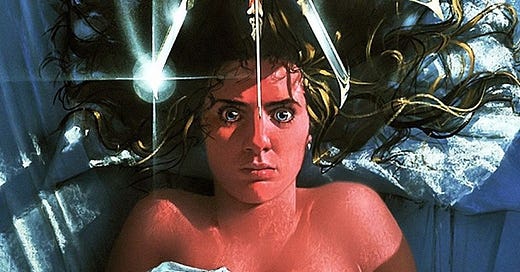



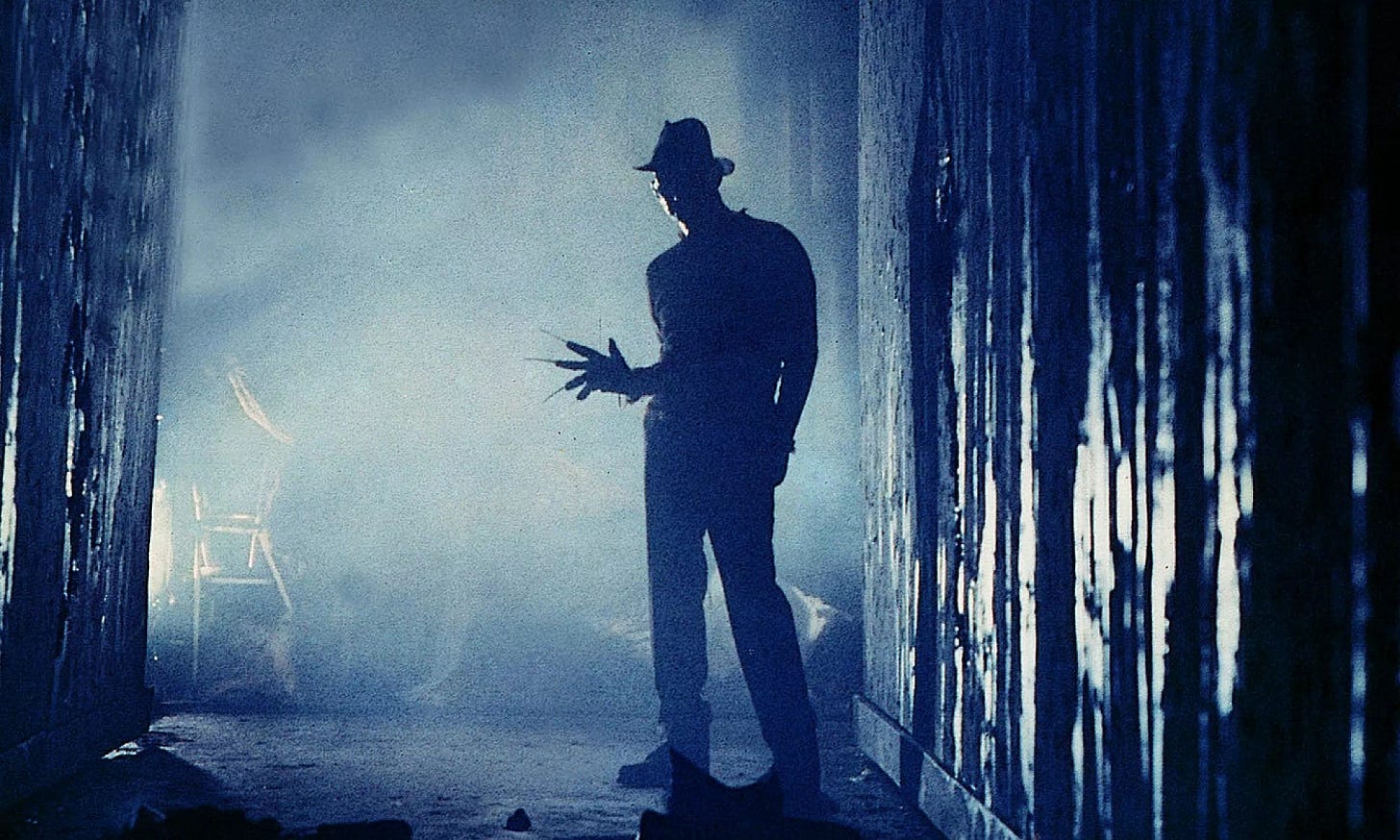
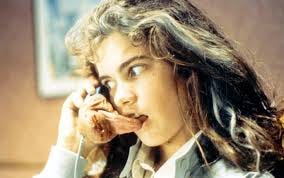
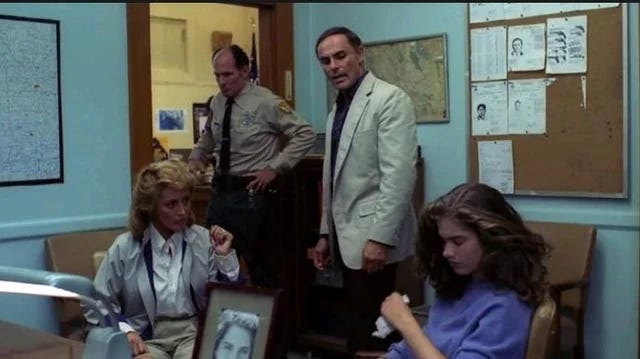

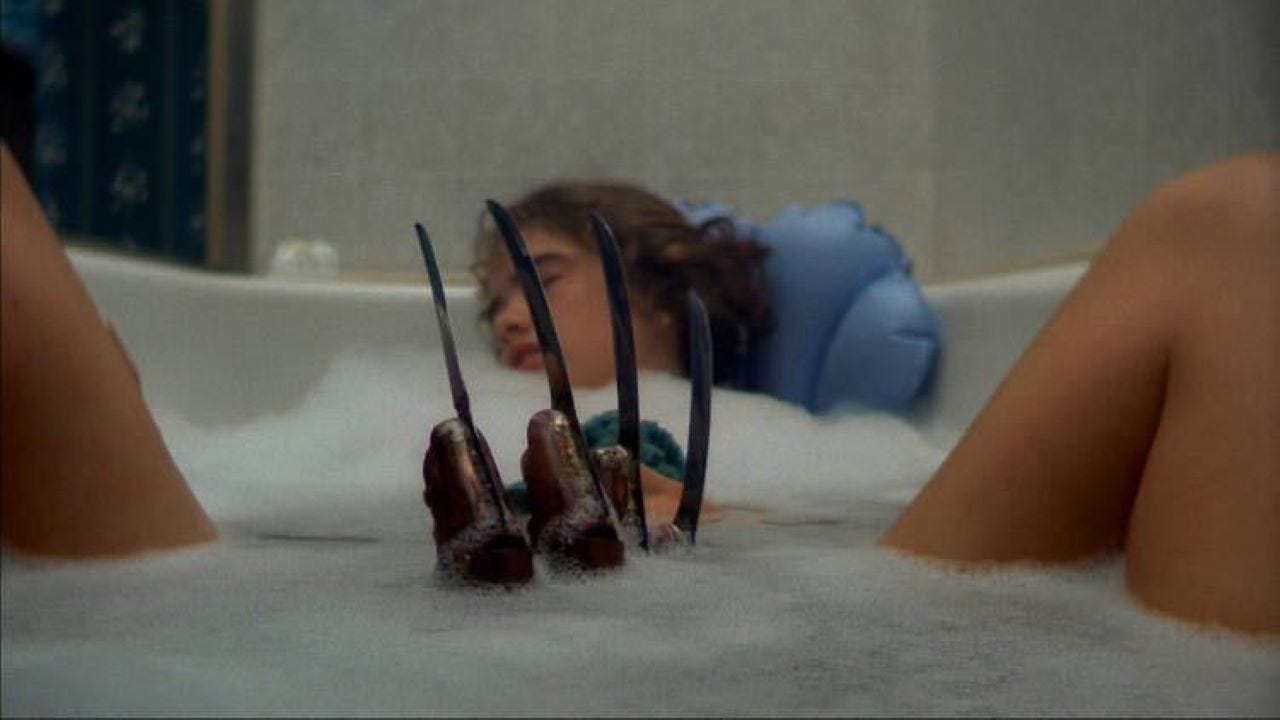
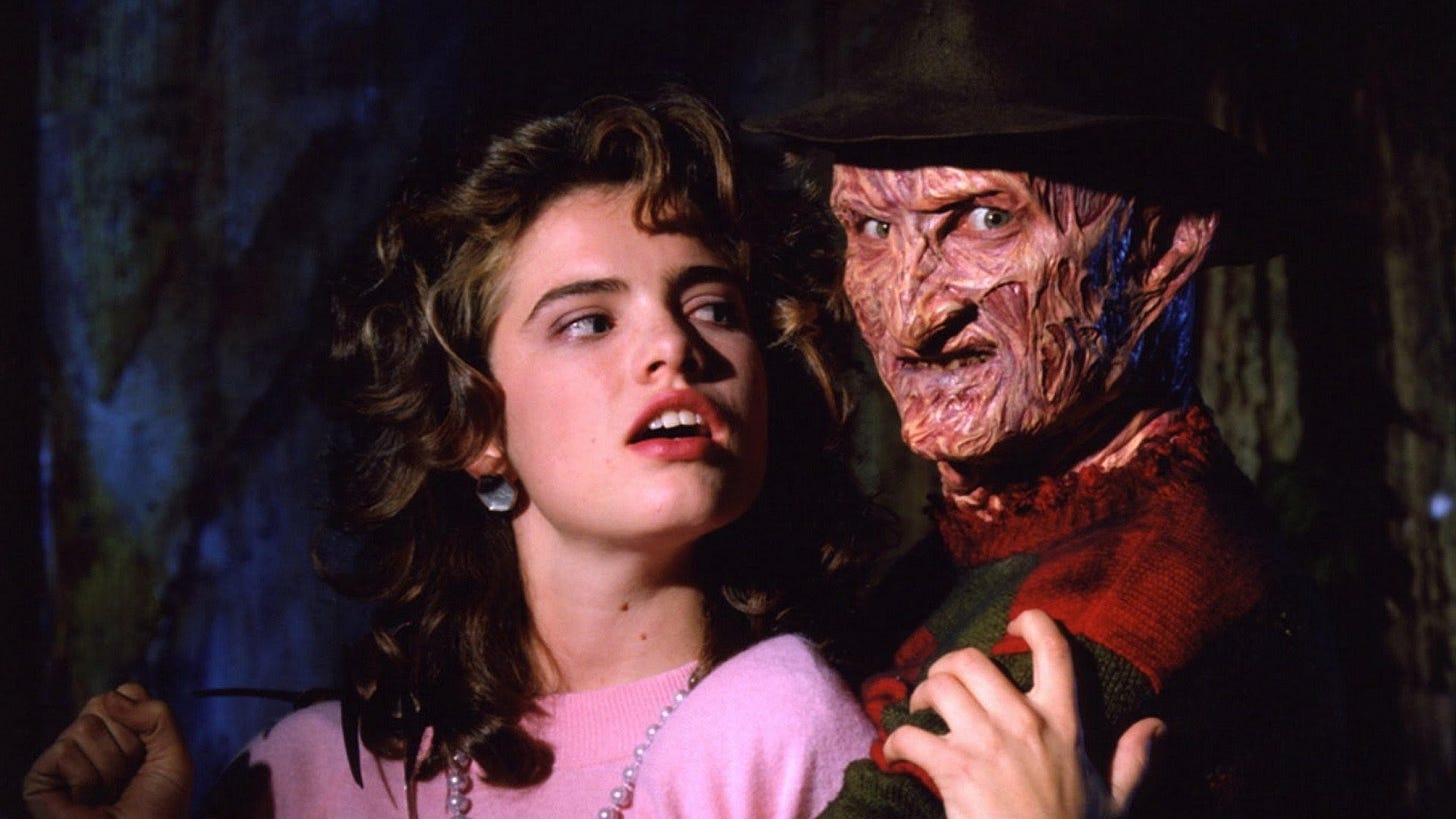
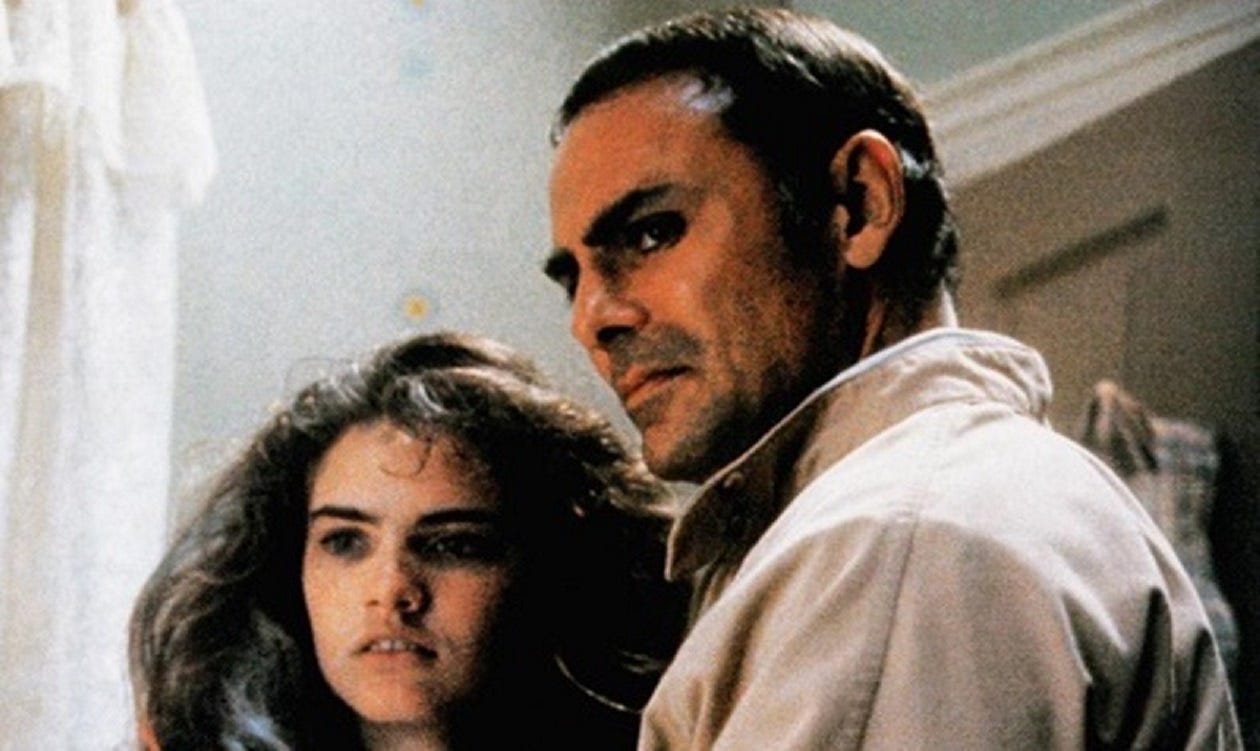
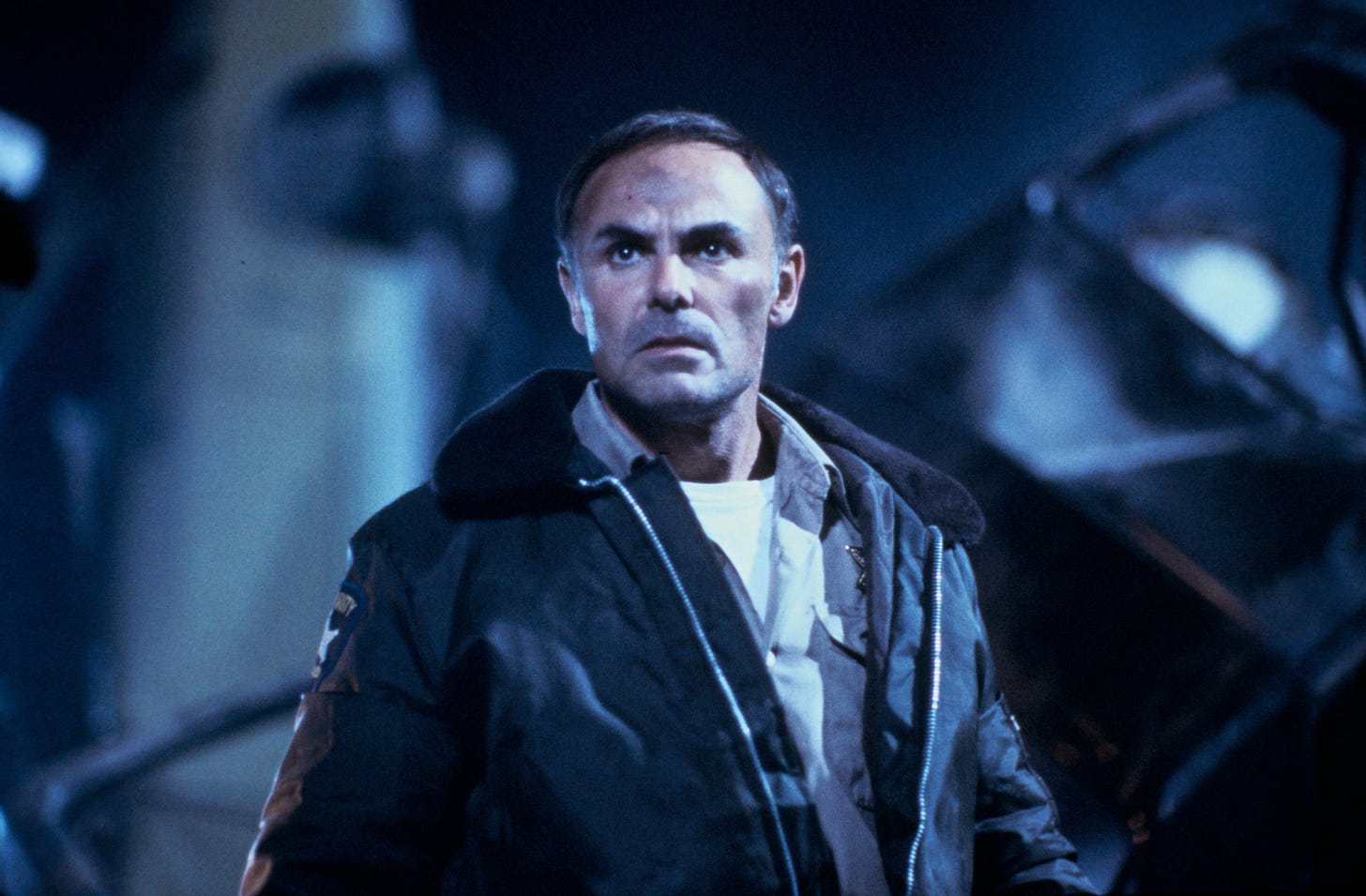
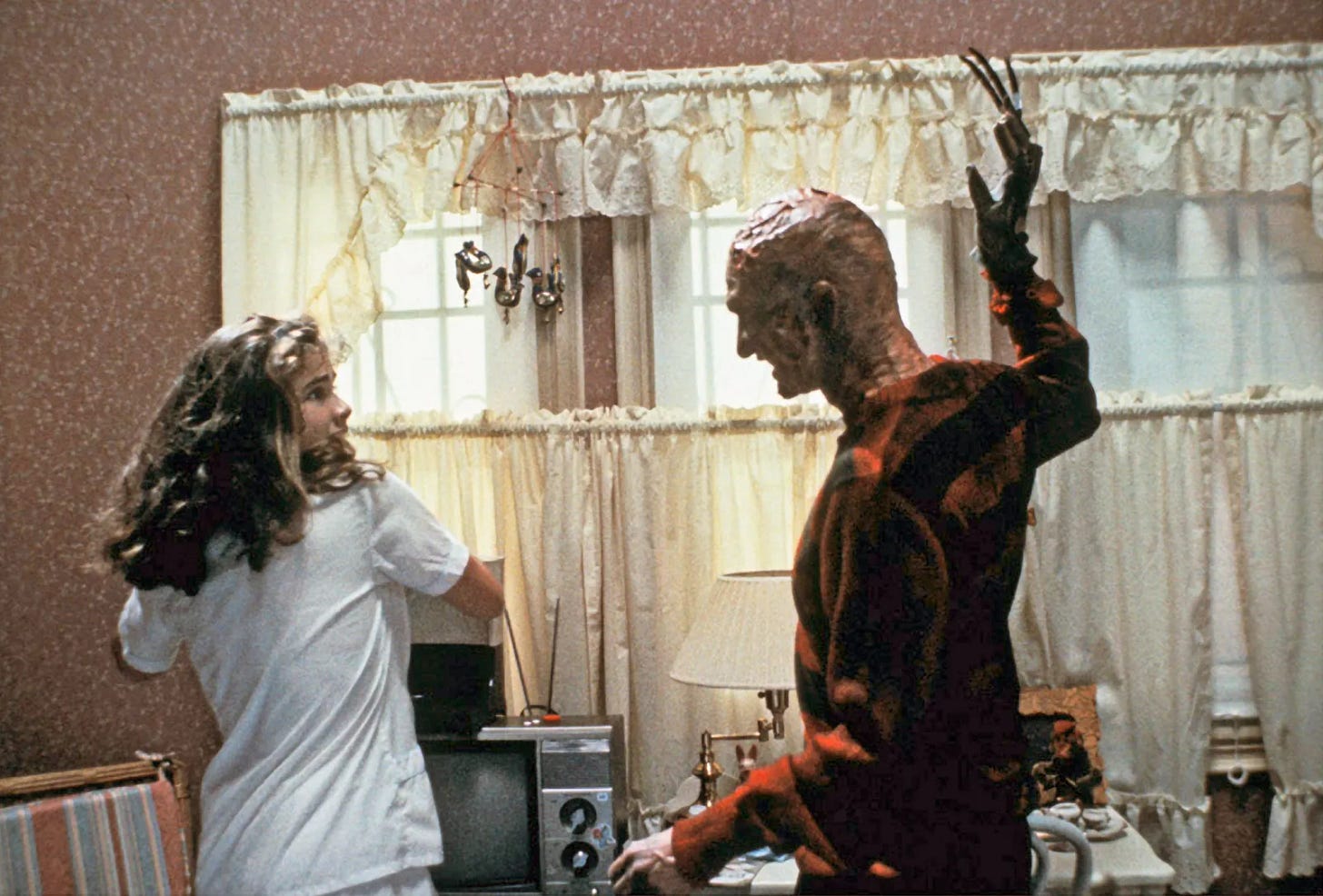
You mentioned the Home Alone-type booby traps Nancy sets up, but this was actually lifted from The Last House on the Left, right down to the lightbulb filled with gunpowder trick. I saw "Last House" many years after I saw the first Nightmare on Elm Street, but recognized it right away.
And the main bad guy's name was Krug. I think Craven was just trying to see if anyone else noticed, or hoping they didn't.
::Craven maintains an eerie atmosphere throughout, so we never quite know when we’re in dreamland or the real world. ::
That's what I really loved about the first two movies was the weird "dream logic" of their world, where the everyday could suddenly turn supernatural and menacing. By THE DREAM WARRIORS the dividing line between reality and the Dreamworld felt a lot more obvious and leaden....
::Don’t believe me? Why not watch Jackie Earle Haley humiliate himself in the godawful reboot? Better yet, don’t. ::
I think the problem was Jackie Earle Haley played Freddy like maybe he *wasn't* the defiler of children originally, which makes what happens to him at the start of the movie feel more like a pulp version of Arthur Miller's THE CRUCIBLE than the start of a horror franchise. Wes Craven made both Freddie and what the parents did to him monstrous—hate feeding off hate resulting in the immortal creature who inhabits teenagers' dreams and kills them. (Gee, why does this sound a lot like current events?)
Seeing Haley's Freddie being chased, cornered, and burned to a crisp by the mob puts the audience more on his side than the Elm Street parents and their children's. Yes, you can certainly have sympathetic villains and even monsters, but I don't think Freddy Krueger's persona can work that way....